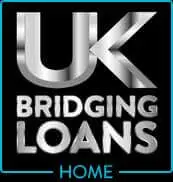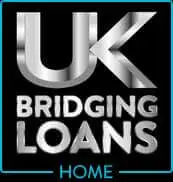Using a Bridging Loan to Buy a House
A business loan is a lump sum of money that you return over an agreed-upon period of time with interest. The funds must be used for business expenses such as marketing, equipment, or expansion.
To be qualified to apply for a loan from us, you must:
- Have been trading for one year or more.
- Be based in the UK.
What’s the difference between a business loan and a personal loan?
Distinguishing between a business loan and a personal loan is paramount for individuals seeking to align financial resources with their distinct needs and objectives. A business loan serves as a targeted financial instrument designed exclusively for commercial endeavours. Typically utilised for purposes such as replenishing inventory, enhancing operational infrastructure, or fuelling expansion initiatives, these loans are expressly earmarked to fortify the financial footing of enterprises. Conversely, a personal loan is tailored to meet individual financial requirements, with applications spanning a spectrum of personal expenditures. Whether financing a vehicle acquisition, undertaking home renovations, or addressing other personal financial needs, these loans are uniquely positioned to accommodate diverse personal aspirations and commitments.
What are the various types of business loans?
In the event of a previous business loan denial, it’s prudent to embark on a strategic reassessment of your financial landscape. Consider these proactive measures before contemplating another loan application:
-
- Conduct a comprehensive review of your financial records to identify areas for improvement and optimise your financial position.
- Endeavour to bolster your credit score through diligent adherence to repayment schedules and responsible financial management practices.
- Address any outstanding debts promptly, thereby enhancing your financial credibility and mitigating potential obstacles in future loan applications.
By diligently adhering to these steps, you may substantially enhance your eligibility and fortify your candidature for a subsequent small business loan application.
Are business loans hard to get?
- Navigating the landscape of business loans can pose challenges for aspiring entrepreneurs. However, our commitment remains steadfast to facilitate access to financial resources for businesses of all sizes. With a steadfast dedication to streamlining the lending process, we annually approve numerous loans, endeavouring to empower business owners with swift and straightforward access to capital.
How it works

Get in touch
Clients approach UK Bridging Loans either directly or via introducers. Basic questions by way of a “fact-finding” process are used by UK Bridging Loans to determine if the lending requirements are a possibility.

Fast approval
An immediate yes or no answer is given, and if suitable, a quotation is formulated and forwarded to the client, usually by email.

Formal offer
A formal offer is produced for any client wishing to proceed and forwarded for signature, again, usually by email.

Representative visit
Each client is visited at the security address for the signature of the remaining loan paperwork, including a CH1 land registry charging order. We will also collect any additional pre-requested documentation.

Dedicated underwriting
The signed documentation was immediately sent to our underwriters. Our model is based on very quick completions, as each deal is funded using all of our own money. On rare occasions, we may request additional information.

Payment of funds
Average completion from initial acceptance to pay-out is usually just a few days. We rarely require valuations or additional legal representation. The land registry charge will be removed once the bridging loan is repaid.
Who can use bridging finance?
Age
The applicant could be too old to obtain a standard high-street mortgage, as most mortgage lenders now prevent borrowing beyond what is deemed “normal retirement age”.
Property conditions
The property may be in a condition where it is not suitable for mortgage financing, and as such, a bridging loan could be used to complete the purchase and any required work prior to refinancing.
Credit
The applicant may have had some adverse credit, however minor, which was previously acceptable to lenders but now no longer fits the high street lending criteria.
Income
The applicant may have difficulty proving the income requirements needed for more regular financing. This may be due to poor self-employment records, a break from work, a reduction in self-employed workloads, or overtime.
USP’s
Superfast completion, often within days
Quick auction finance
2nd charge behind the bridging lender
Pure equity-based lending
Loans from £25,500
Land, with or without planning
3rd charge (consent is not always required)
2nd charge behind the equity release lender
Residential and commercial
A free legal option
2nd charge (consent is not always required)
Adverse credit is considered
Up to age 85
Valuations are not always required
No monthly payments
Frequently asked questions
When is a bridging loan needed?
A bridging loan is a short-term financial product that enables borrowers to ‘bridge’ temporary gaps in their finances. They are typically used to cover time-critical needs such as property purchases or business investments while awaiting long-term financing or the sale of assets.
What can a bridging loan be used for?
Bridging loans serve diverse purposes for individuals and businesses. Common uses include property acquisitions, home renovations, buying at auctions, settling tax bills, and addressing cash flow issues in businesses.
They offer flexibility and speed, making them a preferred choice for various short-term financial requirements.
Is a bridging loan a good idea?
Whether or not a bridge loan is a wise choice will depend on your particular needs, financial situation, and the purpose of the loan. Bridging loans are often short-term financing arrangements used to “bridge” the gap between purchasing a new property and selling an existing one.
Can anyone get a bridging loan?
All people or businesses who require short-term financing to bridge a gap between the acquisition of a new property and the selling of an existing one can apply for bridging loans.
What are ‘open’ and ‘closed’ bridging loans?
Bridging loans come in two main types: ‘open’ and ‘closed’.
- Open-bridging loans are suitable when you don’t have a definite repayment date, such as when selling a property without a set completion date. You’ll need a clear exit strategy, typically the sale of an asset or refinancing.
- Closed bridging loans are designed for borrowers with a confirmed repayment date, like when you’ve exchanged contracts for the sale of a property but are waiting for completion. The exit strategy is fixed, making it less risky for lenders.
In both cases, demonstrating a solid exit strategy is crucial for loan approval.
What are first and “second charge” bridging loans?
Bridging loans can be categorised into ‘first charge’ and second-charge loans.
- First-charge bridging loans: These loans take priority over existing mortgages or loans on the property you are using as security. They are typically used for property purchases.
- Second charge bridging loans: If you already have a mortgage on the property, a second charge bridging loan is taken as a subordinate loan. It is often used when the first-charge mortgage has a lower interest rate and you need additional funds.
The key difference is the priority of repayment in cases of default. First-charge loans are paid off before second-charge loans.
How much can I borrow with a bridging loan?
The exact amount you are considered eligible for will be calculated on the basis of multiple factors, such as the value of the assets you provide as security for the loan, the lender’s maximum LTV (which is usually 75%), the strength of your exit strategy, and so on.
A minimum loan amount of £10,000 and a maximum in the region of £25 million or more are usually the norm.
Is a bridging loan cheaper than a mortgage?
No, a bridging loan is generally not cheaper than a mortgage. Bridging loans are designed for short-term financing needs, often to bridge the gap between the purchase of a new property and the sale of an existing one.
How much does a bridging loan cost?
While bridging loans may have seemingly high APRs, they are short-term solutions, making them cost-effective when repaid promptly. Monthly interest can be as low as 0.4% on some bridging loans, which are usually ‘rolled’ into the final payment, so no monthly instalments are needed in the interim.
Interest rates vary significantly from one lender to the next, based on their own unique lending policies, the creditworthiness of the applicant, their planned repayment date and method, and more.
Bridging loans may involve additional fees:
- Arrangement fee (1-2%): These cover setting up the loan.
- Exit fee (around 1%): charged upon loan repayment.
- Administration and repayment fees vary by lender.
- Legal fees: Cover all legal costs.
- Valuation fees: To appraise property (asset) value.
A broker can help minimise or avoid certain fees, as they have industry insights and can identify lenders with favourable terms. Working with a broker may lead to cost savings during the loan process.
How much do you need to put down for a bridging loan?
A 20–40% deposit is usually required for a bridging loan. A 100% bridging loan may be obtained without the need for a deposit, but this may require additional collateral to secure the loan, and there may be stricter requirements and increased expenses.
Do you pay a bridging loan monthly?
Lenders view bridging loans as very risky, thus they want a clear exit strategy regarding loan repayment. Typically, this involves refinancing or selling a property. This does imply that, at the conclusion of the term, the loan is paid back in full.
Can I get a bridging loan with bad credit?
Yes, you can secure a bridging loan with bad credit. However, not all lenders are willing to consider applications from individuals or businesses with poor credit, and you may face higher overall borrowing costs if your application is successful.
Brokers can assist in finding suitable ‘subprime’ lenders. Importantly, applying for a bridging loan won’t impact your credit score, making it a low-risk option to explore.
What are the alternatives to a bridging loan?
If bridging loans aren’t the best fit, consider alternatives:
- Remortgaging: Replacing your existing mortgage with a new loan
- Let-to-Buy Mortgages: Converting your current home into a rental property while buying a new property to live in.
- Secured business loans: financing for business purposes with assets as collateral.
- Personal loans: unsecured loans for various personal needs.
- Development finance: funding for property development projects
How do I find the right bridging loan for me?
To secure the right bridging loan and the best possible deal:
- 1. Determine your need: Calculate the exact amount required and the expected repayment timeline. Having a clear plan is crucial.
- 2. Assess suitability: Evaluate your financial suitability, including your budget, available security, exit strategy, and existing debts.
- 3. Compare the market: Engage a reputable broker to scour the market for the most favourable terms and lenders that match your requirements. Brokers have access to a wide network of lenders, saving you time and effort.
- 4. Check the fine print: Carefully study the wording of the agreement, in particular the important details like interest rates, fees, and repayment obligations.
What property can be used as collateral for a bridging loan?
The great thing about bridging loans is that you can use multiple types of property for your security. While it’s very common to use your primary residence, you can also use undeveloped land or commercial property. Since the property doesn’t have to be finished to act as security for a bridging loan, it makes it really easy to finance using the property that you have.
The types of property that you can use as security when obtaining a bridging loan include:
- Residential developments
- Residential property
- Commercial developments
- Commercial property
- Commercial investment property
- Residential investment property
- Land
- Offices
- Farms
- Agriculture
- Retail units
- Auction properties (whether or not they are fit for habitation)
How long does a bridging loan take?
The complexity of the transaction, the responses of the parties involved, and the lender’s efficiency are some of the variables that might affect how long a bridging loan process takes. Generally speaking, bridging loans are made to offer short-term funding rapidly, and the application process is frequently quicker than with standard loans.
Do you pay stamp duty on a bridging loan?
The valuation of the property, the loan-to-value (LTV) ratio, and the lender’s policies all affect how much you can borrow on a bridging loan in the UK. Bridging loans are generally utilised for short-term financial needs and have higher interest rates than standard mortgages in the UK.
Do bridging loans do credit checks?
Yes, credit checks are usually performed by the majority of lenders who offer bridging loans as part of the application and approval procedure. Although the property is the main factor taken into account for bridging loans, lenders may nevertheless evaluate the borrower’s creditworthiness to some degree.
Bridging loan uses
Opening Hours
Mon-Thurs: 9am-8.30pm
Fri: 9am-5pm
Sat: 10am-5pm
Sun: 11am-5pm






